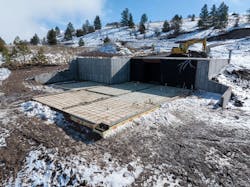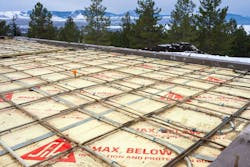Yes, You Can Use Polyiso Below-Grade, and Busting Other Myths
Polyisocyanurate insulation (polyiso) stands out as a popular choice for insulation, however, despite its widespread use, several misconceptions about polyiso can lead to confusion among builders, architects, and contractors.
Clarifying these misunderstandings ensures proper polyiso use, especially in below-grade applications where its benefits truly shine.
Myth: Polyiso is Only for Roofing Applications and Absorbs Moisture, Making It Ineffective Below Ground
Polyiso is often associated with roofing, but its excellent thermal performance, fire-resistive properties, high compressive strength, and moisture resistance make it an ideal insulation material for above-grade walls, as well as below-grade applications such as foundation walls, basement floors, and under slabs.
When manufactured with water-resistant facers, polyiso’s closed-cell structure provides strong protection against moisture intrusion and ensures long-term building performance.
Myth: Polyiso is Too Thick for Space-Constrained Areas
One of polyiso’s standout qualities is its high R-value per inch of thickness. This makes it a good choice for space-constrained areas, such as basement walls.
Polyiso can achieve an R-10 with 1.5” thickness, compared to 2” required with XPS. This allows builders to meet insulation requirements without compromising interior space or needing excessive excavation.
Myth: Polyiso is Not Structurally Durable Enough for Below-Grade Use
Polyiso insulation is known for its compressive strength, making it a durable option for below-grade use, where 25 psi is generally required in commercial and residential foundations.
Myth: Polyiso is Not Environmentally Friendly
Polyiso is often recognized for its environmental benefits. Its high R-value contributes to the building’s energy efficiency by reducing the need for heating and cooling. This not only lowers the building's operational energy consumption but also reduces its carbon footprint.
Additionally, polyiso can meet the same R-value requirement with 25% less material than XPS. Using 1.5” of polyiso instead of 2” of XPS for an R-10, means 25% less material produced, warehoused, and transported at a lower cost. It’s not necessary to send four trucks of XPS to a jobsite when three trucks of polyiso will do the job.
Understanding the truth about polyiso can help construction professionals make informed decisions and implement effective insulation strategies for both above and below-ground projects.

